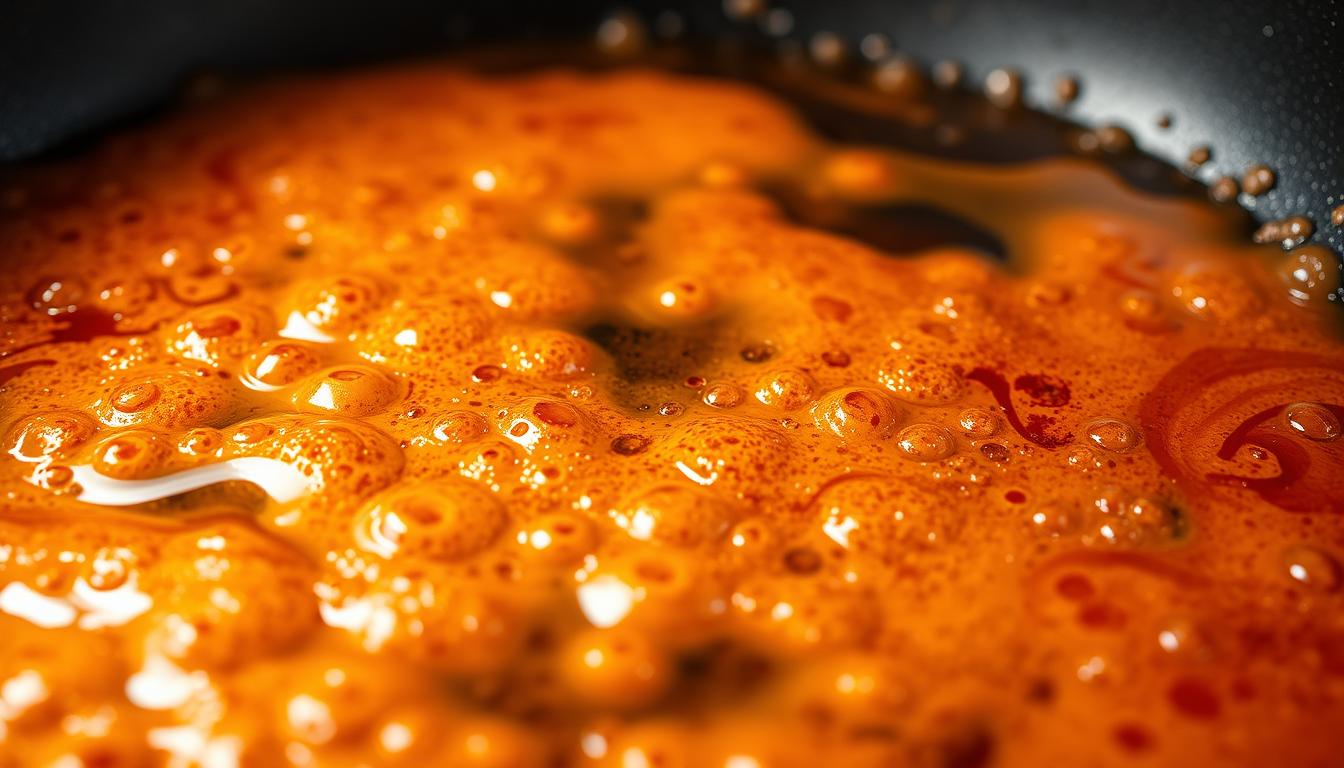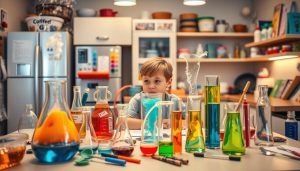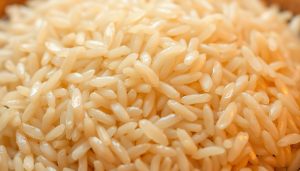Did you know heating sugar creates over 100 flavor compounds? This surprising transformation occurs through caramelization, a reaction shaping everything from candies to savory dishes. While often confused with general browning, this pyrolytic process requires precise heat application and pure sugar molecules to work its magic.
When temperatures reach 320°F (160°C), sugar crystals break down into caramelans, caramelens, and caramelins. These polymers create the golden-brown hues and rich aromas in foods like crème brûlée or roasted vegetables. Unlike other reactions, this method doesn’t need proteins or amino acids – just heat and time.
Chefs leverage this technique to develop deep, complex flavors. Caramelized onions gain sweetness without added ingredients. Glazed meats develop crispy exteriors through sugar breakdown. Even fruits like bananas transform under controlled heat.
Mastering this process helps you predict outcomes in recipes. Different sugars caramelize at varying temperatures – fructose works faster than sucrose. Controlling heat prevents burning while maximizing flavor development.
Key Takeaways
- Requires pure sugar heated to specific temperatures (320°F+)
- Produces three unique polymers responsible for color and taste
- Works without amino acids unlike Maillard reactions
- Enhances both desserts and savory dishes naturally
- Demands precise heat control for optimal results
Understanding the Science Behind Caramelization and Browning
What transforms ordinary sugar into rich, golden caramel? This kitchen alchemy involves precise molecular changes few home cooks fully grasp. 
The Chemical Reactions Involved
When you heat sugar beyond its melting point, it undergoes 15+ distinct transformations. Sucrose breaks into fructose and glucose through inversion. These simpler sugars then form new bonds through condensation and dehydration reactions.
Scientists identify three key stages:
- Molecular rearrangement (equilibration)
- Fragmentation into smaller compounds
- Polymer formation creating color/flavor
Temperature’s Critical Role
Each sugar type activates at specific heat levels. Fructose caramelizes fastest, while sucrose needs higher temperatures. Use this table to guide your cooking:
| Sugar Type | °C | °F |
|---|---|---|
| Fructose | 105 | 221 |
| Glucose | 150 | 302 |
| Sucrose | 170 | 338 |
Differences from the Maillard Reaction
Unlike caramelization, the Maillard reaction requires amino acids from proteins. This food science principle explains why seared meats develop different flavors than candied nuts. Your stove’s dry heat achieves what boiling water cannot.
How Caramelization Is Different from Browning
The alchemy of heat transforms sugars into complex flavors through a process distinct from other kitchen reactions. This sugar-specific phenomenon creates signature hues and tastes in everyday dishes without protein involvement.
Defining Caramelization Versus Non-Enzymatic Browning
Pure sugar decomposition drives this transformation. Unlike non-enzymatic browning methods like the Maillard reaction, no amino acids participate. The molecules reorganize through thermal breakdown alone.

Practical Examples in Cooking
Watch sliced onions turn amber during slow sautéing – their natural fructose transforms over 30-45 minutes. This technique enhances French onion soup and burger toppings. Other applications include:
| Process | Components | Temperature | Outcome |
|---|---|---|---|
| Caramel sauce | White sugar + heat | 338°F | Liquid gold for desserts |
| Crème brûlée | Torched sucrose | 320°F | Glass-like topping |
| Dulce de leche | Milk sugars | 212°F | Silky caramel spread |
Fruits like pears develop richer profiles when their inherent sugars break down. Garlic cloves become spreadable and sweet when roasted properly. Controlled heat prevents carbonization, maintaining desirable nutty undertones.
Recognize successful transformations by the developed aroma and golden-brown color. Burnt notes signal excessive heat, while pale results indicate insufficient cooking time.
Techniques and Factors Influencing Caramelization
Master chefs know sugar selection makes or breaks caramelized creations. Your choice of sweetener determines reaction speed, flavor depth, and cooking methods. Three variables control outcomes: sugar composition, heat application, and chemical environment.
Choosing the Right Type of Sugar
Different sugars transform at unique heat thresholds. Fructose works best for quick caramelizing, while maltose suits high-heat applications. Use this guide:
| Sugar Type | Caramelization Temp | Best For |
|---|---|---|
| Fructose | 221°F (105°C) | Fruit glazes, delicate sauces |
| Glucose | 302°F (150°C) | Candies, syrups |
| Sucrose | 338°F (170°C) | Dessert toppings |
| Maltose | 360°F (180°C) | BBQ sauces, stir-fries |
Brown sugar’s molasses content acts as a natural catalyst. It caramelizes faster than white sugar, ideal for quick weeknight recipes.
Managing Heat, Water Content, and pH Levels
Precision matters when applying heat. Exceeding a sugar’s threshold creates bitterness, while insufficient heat prevents transformation. Use dry pans or temperatures above 212°F to evaporate water quickly.
Acidity dramatically alters reaction speed. Neutral environments slow the process, while acidic (pH 9) conditions accelerate it. For example:
- Adding lemon juice (acidic) speeds up caramelization
- Baking soda (alkaline) creates faster browning
Professional kitchens use infrared thermometers to monitor sugar stages. This prevents burning while maximizing flavor development in sauces, glazes, and roasted dishes.
Conclusion
Every golden hue in your dish tells a sugar story. When heat meets sweet crystals, chemical transformations create complex profiles that elevate both desserts and savory plates. This temperature-driven process works magic in barbecue sauces as effectively as in crème brûlée.
Your choice of sweetener directly impacts results. Fructose caramelizes faster than sucrose, while maltose handles higher heats. Adding sugars later in cooking builds layered flavors without overwhelming bitterness. A drizzle of honey at the right moment can transform roasted vegetables.
Control outcomes by managing heat sources and pH levels. Acidic environments speed reactions, while precise thermometers prevent scorching. Remember: impurities in brown sugar accelerate browning compared to refined varieties.
Apply this knowledge to unlock new dimensions in everyday meals. From caramelized onions softening in pans to glossy glazes on meats, mastering these reactions turns simple ingredients into culinary masterpieces. Your kitchen becomes a lab where science meets artistry.



